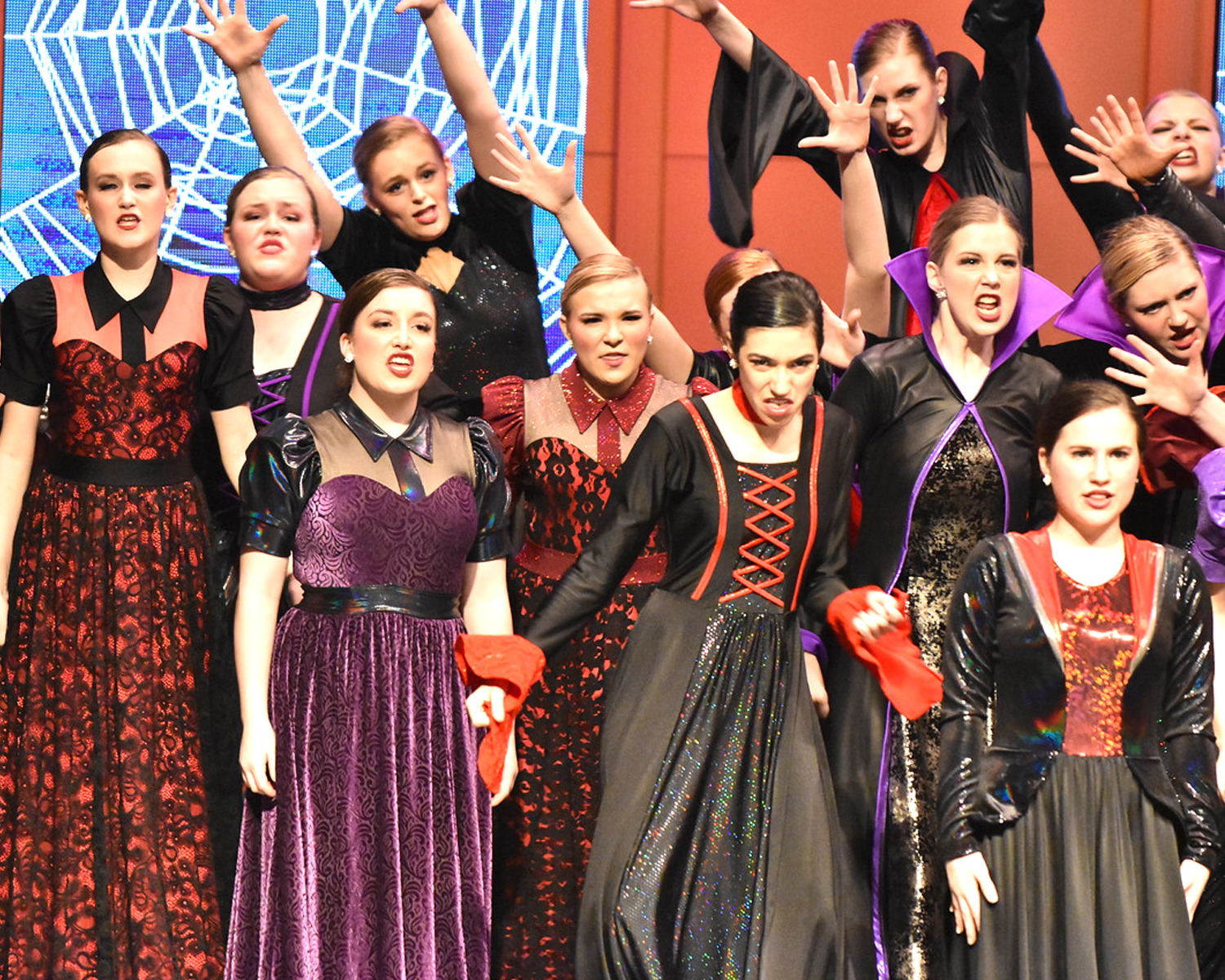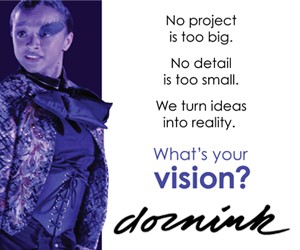
Deborah Nelson of Satin Stitches and Diana Coffield of Coffield Collection took time from their hectic schedules to offer advice that may prove helpful in your planning.
Getting the Most for Your Money
Deborah Nelson of Satin Stitches explains that no matter how tight or open the budget for costuming may be, you want the most “bang for your buck” for any costume. In working toward those ends, there are many choices directors and boosters can make that will come into play.
First is timeliness; if you order early, you often can earn discounts from your preferred company simply by knowing your order date well ahead of delivery deadline and not paying rush fees. Secondly, you want to consider a costume from “performance distance,” ensuring the extras you pay for are actually going to pay off-visually speaking-from the appropriate viewing distance.
You want to be aware of the limitations of specialty trims or fabrics that might not survive the rigors of intense competition or multiple performances; also, consider if the fabrics have the appropriate stretch to ensure the choreography won’t be compromised.
Finally, you don’t want the cost of cleaning and maintaining fragile fabrics to become an issue.
Diana Coffield, of Coffield Collection, notes that directors should consider the Designer’s Holy Triangle, with the three points representing three criteria: good, fast, and cheap. In short, good plus fast means expensive, good and cheap means slow delivery, and fast plus cheap means inferior-which is obviously the least favorable option.
Don’t Overdesign
As to the more creative aspects of design, Nelson discourages over-designing; instead, listen to the advice of costume professionals about how to edit design concepts to eliminate superfluous details that “muddy up”
design. Nelson notes, “A pleasing combination of textures and colors on a design is attractive, but watch out for too many of these details that simply drive up the materials costs or labor costs.” She suggests the most important detail is to imagine the design from twenty feet away.
She adds, “If you don’t notice a detail ‘from performance distance’ then you are spending money on a detail that is not visually necessary on the stage.”
Costumes that Transform and Scoring
Nelson notes that innovative costumes, those that “transform” before your eyes, are a popular concept, which does not necessarily make them a good choice for all groups. No matter what, the costumes should not detract from the choreography.
She adds, “There are no scoring marks for ‘oh my, that tricky costume transformed wonderfully’ on the judges’ sheets.” The question Nelson encourages directors to ask themselves, when considering transforming features of innovative costuming, is “Will it be worth it?”
Will those features bring in higher scores? Will the show choir be able to consistently hit these transitions and perfect these transformations? Is the added cost to create these transforming creations likely to create an equivalent benefit to the show choir?
Coffield argues that while wonderful costumes cost a lot and take a great deal of time to manufacture and deliver, they usually make no difference in points during a competition-unless it’s to lose points because a costume is awkward or ill-fitting.
She also urges directors to be careful about becoming too swept up in a choreographer’s vision for how costumes could elevate numbers and, while considering the input of a choreographer about potential visual impact, the directors must “have feet anchored on the ground.”
Because costume decisions often come at the end of choosing staging elements, lighting, music, sets, props, and other visual elements, Coffield notes the costumes are fit into the “amazing kaleidoscope” of the overall picture of the show.
If the visual elements are already outstanding, the costumes–while they must be well-fitting and not cheaply made–are likely not the place to spend a huge piece of your overall budget. Conversely, if the other design elements are quite simplistic, then you certainly don’t want to “skimp on the costumes,” because they are the primary visual element you are adding to your performance.
The Show Choir Body Has Changed
Coffield notes that having a costume that fits well and has the proper “coloring, spin, and sparkle” is important. Cheaper options that fit poorly–or aren’t altered properly–affect the overall performance but also put some performers at a disadvantage.
When Coffield began, she explains, the average size for girls’ groups was a size 6, with a couple of 10s or 12s; an outlier would be a size 14. Now, in girls’ groups, she says about half of the group wears a size 12 or larger. She notes you need “perfect proportions for any body shape.”
Show choir has changed over the last few decades, and in 2019, show choir members include people of every body type, every shape, and every size. Talent has no set size, and the inclusivity is wonderful, of course.
The only downside is that many people want to order a dress or shirt that’s nothing more than a larger version of what was really designed for a size four or six. Cheaper costumes are just that-larger versions of a costume that was not designed for their proportions.
While carefully chosen undergarments are part of the solution, Coffield notes, people should be wearing costumes designed to their proportions, with a proper chest-to-waist ratio that creates costumes that fit well and that performers feel good wearing.











